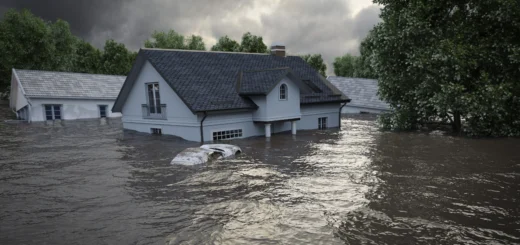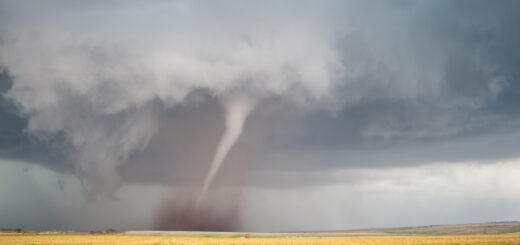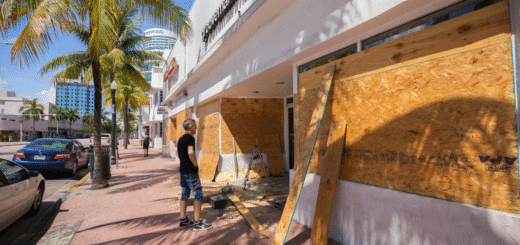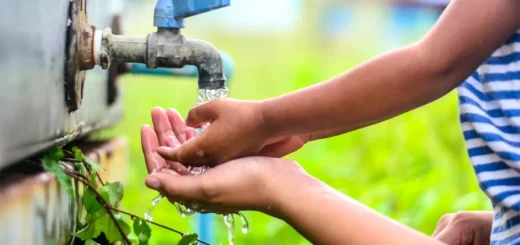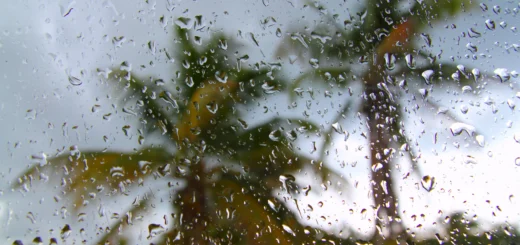Preparing for Severe Weather: A Guide to Emergency Readiness in the Southern United States
Hello there, fellow Southerners! Are you ready to delve into the world of emergency readiness and learn how you can best prepare for severe weather? Well, you’ve come to the right place, Southern Prepper is your go-to resource for emergency preparedness. Living in the Southern United States means we’re no strangers to unpredictable and severe weather events.
From hurricanes to tornadoes and everything in between, our region can be pretty challenging when it comes to weathering storms. But with a little preparation, we can stay ahead of the game by preparing for severe weather and keeping ourselves and our loved ones safe.
Having personally experienced the impact of severe weather along the Gulf Coast and deep south and after countless hurricanes, tornados, and floods, my experience has taught me the importance of being prepared.
That’s why I’m excited to share this emergency preparation blog with you! We’ll cover all the essentials of emergency readiness, tailored specifically to our beloved Southern US.
We’ll explore the types of severe weather we commonly encounter, the unique climate factors, and the local resources that will keep us informed and prepared.
So, get ready to boost your emergency readiness skills. Together, we’ll navigate this journey armed with practical tips, personal insights, and the knowledge needed to face any storm that comes our way.
Let’s dive in and make sure we’re well-prepared for whatever nature throws at us.
Table of Contents
Understanding Southern Weather Patterns
Before we dive into emergency readiness and preparing for severe weather that is common to the region, let’s take a moment to understand the wild and unpredictable weather patterns we often face in the southern United States.
From scorching summers to severe thunderstorms and hurricanes, it’s like nature loves to keep us on our toes.
1. Heatwaves and Humidity: When summer arrives, brace yourself for sizzling temperatures and high humidity. It’s not uncommon to feel like you’re walking through a sauna. So, make sure to stay hydrated, dress in breathable clothing, and find ways to beat the heat.
2. Thunderstorms and Lightning: Ah, the rumbling sound of thunder and the dazzling display of lightning. Southern thunderstorms can be quite spectacular, but they also come with heavy rainfall and powerful gusts. Keep an eye on the weather forecast and take shelter indoors when thunder roars.
3. Tornadoes and High Winds: Unfortunately, tornadoes are a real threat in the southern states. These twisting funnels can cause significant damage in a matter of minutes. Stay informed about tornado watches and warnings, and have a plan in place to seek shelter in a sturdy interior room or basement if needed.
4. Hurricanes and Tropical Storms: Ahoy, hurricane season! Living along the coast means we need to be prepared for these powerful storms. Stay tuned to local authorities and heed evacuation orders if necessary. Stock up on essentials like non-perishable food, water, batteries, and important documents.
5. Flooding: Heavy rainfall from tropical systems or intense thunderstorms can lead to flash flooding. Be aware of flood-prone areas near your home and stay informed about flood watches and warnings. If flooding occurs, prioritize your safety and follow evacuation orders.
Understanding these weather patterns unique to the southern United States is crucial for your emergency preparedness.
In the next section, we’ll discuss practical steps you can take to ensure you’re ready to face these severe weather events head-on.
Creating an Emergency Preparedness Plan
Now that we have a good grasp of the weather patterns in the southern United States, it’s time to create our emergency preparedness plan.
It may sound overwhelming, but a little preparation can go a long way in keeping you and your family safe during a natural disaster.
1. Stay Informed: Knowledge is power. Stay connected to local weather updates, emergency alerts, and evacuation notices. Sign up for text alerts or download weather apps that keep you in the loop. Being aware of any impending threats is crucial for taking timely action.
2. Build an Emergency Kit: Picture this: the power goes out, roads are blocked, and you’re stuck at home. Having an emergency kit stocked and ready will be a lifesaver. Gather essentials like non-perishable food, water, a first aid kit, flashlights, batteries, a battery-powered radio, a multi-purpose tool, and any necessary medications. Don’t forget about your pets—pack some supplies for them too!
3. Create a Family Communication Plan: When chaos ensues, it’s important to have a plan to stay connected with your family. Designate an out-of-town contact person whom everyone can reach to share updates and check in. Establish meeting points and discuss what to do in different scenarios. Clear communication can provide peace of mind during stressful times.
4. Protect Your Home: Take some preventative measures to fortify your home against potential damage. Trim trees near your property, secure loose outdoor items, and consider installing storm shutters or impact-resistant windows. Ensure that your home insurance coverage is up to date and provides adequate protection in case of a natural disaster.
5. Evacuation Planning: Sometimes, the safest option is to evacuate. Familiarize yourself with evacuation routes in your area and identify alternative accommodations if needed. Pack a “go bag” with essential items like important documents, cash, clothing, and personal hygiene products. Remember to include any necessary supplies for children, seniors, or pets.
6. Practice and Review: Practice makes perfect, as they say. Conduct drills with your family to simulate emergency situations and ensure everyone knows what to do. Regularly review your emergency plan and update it as needed.
By creating an emergency preparedness plan, you’re taking proactive steps to safeguard yourself, your loved ones, and your property.
It’s better to have it and not need it than need it and not have it.
In the next section, we’ll delve into practical ways to protect your home from potential dangers.
Protecting Your Home and Property
Now that we’ve covered the importance of creating an emergency preparedness plan, it’s time to focus on protecting your home and property from the potential dangers of a natural disaster.
Mother Nature can be quite unpredictable, but with some thought and effort, we can minimize the impact on our humble abodes.

1. Evaluate Your Property: Take a stroll around your property and assess any vulnerable areas. Look for signs of erosion, weak spots in your foundation, or cracks in walls.
If you can do it without endangering yourself or others, check your roof for loose shingles or areas that may need repair.
2. Clear the Surroundings: Trim those overgrown branches and shrubs near your home. They might seem harmless, but during a storm, they can become projectiles and cause significant damage.
Clear gutters and drains from debris to ensure proper water flow.
3. Secure Windows and Doors: Windows and doors are vulnerable entry points for wind, rain, and debris. Consider installing storm shutters or impact-resistant windows to shield against strong gusts.
Reinforce entry doors with sturdy locks and bolts. And seal or caulk any gaps or cracks to help prevent water infiltration.
4. Anchor Outdoor Items: Outdoor furniture, grills, and other loose items can turn into hazardous projectiles during high winds. Anchor them securely or bring them indoors when severe weather is expected.
5. Backup Power: Power outages are common during natural disasters. Investing in a backup power source, such as a portable or whole-house generator, can provide you with essential electricity to keep essential appliances running.
Make sure to follow safety guidelines when operating your portable generator, run it only in well-ventilated areas, and store an adequate supply of fuel (gasoline or propane).
6. Document Your Belongings: Take the time to create a comprehensive inventory of your belongings. Photograph or video each room, including valuable items. Keep copies of important documents, such as insurance policies, in a secure place or digitally stored. This documentation will prove invaluable when filing insurance and FEMA claims in case of any damage or loss.
By implementing these measures, you’ll be better equipped to protect your home and property during a natural disaster.
Staying Safe & Preparing For Severe Weather
When the storm clouds gather and the winds start howling, it’s crucial to prioritize your safety and the safety of your loved ones.
In this section, we’ll discuss some essential tips to keep you protected during severe weather events in the southern United States.
1. Stay Informed: Stay updated with the latest weather forecasts and warnings from reliable sources. Pay attention to local news, radio, or weather apps that provide real-time information about the storm’s track, intensity, and any evacuation orders.
2. Create a Safe Shelter: Identify a safe area in your home where you can take shelter during a severe weather event. It could be a storm cellar or an interior room on the lowest level of your house. Ensure this space is stocked with essential supplies like flashlights, batteries, a first aid kit, and non-perishable food and water.
3. Have an Emergency Kit: Prepare an emergency kit with essential items that can sustain you and your family for at least 72 hours. This kit should include items such as bottled water, non-perishable food, medications, a battery-powered radio, extra batteries, a multi-purpose tool, blankets, and personal hygiene items. Don’t forget to include any specific items for infants, elderly family members, or pets.
4. Evacuation Plan: Familiarize yourself with evacuation routes in your area and have a plan in place. Know where you would go if you need to evacuate, whether it’s a designated shelter, a friend or family member’s house, or a hotel outside the affected area. Pack essential documents, important medications, and a bag with a change of clothes for each family member.
5. Communication is Key: Establish a communication plan with your family and loved ones. Share contact information and designate a central point of contact in case you get separated. Have a backup method of communication, such as walkie-talkies or a designated social media group, as traditional communication channels may be disrupted during severe weather events.
6. Heed Warnings and Evacuation Orders: If local authorities issue evacuation orders, take them seriously and evacuate promptly. Don’t wait until the last minute or underestimate the severity of the situation. Your safety should always be the top priority.
Staying safe during severe weather is a team effort. Take the necessary precautions, stay informed, and look out for one another.
Recovery and Aftermath
While we hope you never have to endure the aftermath of a severe weather event, it’s essential to be prepared for the recovery process.
In this final section, we’ll discuss important steps to take as you navigate the recovery phase after a natural disaster in the Southern U.S.
1. Assess the Damage: Once it’s safe to do so, assess the damage to your property. Document any structural damage, take photographs or videos, and make a detailed inventory of your belongings.
2. Contact Your Insurance Provider: Reach out to your insurance company and FEMA as soon as possible to initiate the claims process. Provide them with the necessary documentation and follow their instructions for filing a claim. Keep copies of all communications and receipts for expenses related to temporary repairs or accommodations.
3. Safety First: Be cautious when returning to your property, as there may be hidden hazards or structural instability. Wear protective gear such as gloves and masks, and be mindful of electrical hazards, gas leaks, or contaminated water. If you’re unsure about the safety of your home, seek professional assistance before reentering.
4. Seek Assistance: In the aftermath of a natural disaster, various forms of assistance may be available to help you with recovery efforts. Reach out to local disaster relief organizations, government agencies, and non-profit groups that provide support to affected communities. They can offer resources, financial aid, and volunteer assistance to help you get back on your feet.
5. Restore Essential Services: Contact utility companies to restore essential services such as electricity, water, and gas. Follow their instructions for safety checks and necessary repairs. Consider working with licensed professionals for major repairs or renovations to ensure the job is done properly.
6. Take Care of Yourself: The recovery process can be physically and emotionally draining. Remember to take care of yourself and your loved ones. Reach out for support if needed, whether it’s from friends, family, or professional counselors. Practice self-care and allow yourself time to heal and rebuild.
Recovering from a natural disaster takes time and resilience, but with proper support and a positive mindset, you’ll get through it.
Lean on your community, lend a helping hand to others in need, and remember that brighter days will come. Stay strong and know that you’re not alone in this journey.
That wraps up our guide to preparing for severe weather. We hope this information has been helpful in preparing you for the unexpected. Remember, the key is to be proactive, stay informed, and have a plan in place. Stay safe, stay prepared, and may the sun shine brightly on your path.


